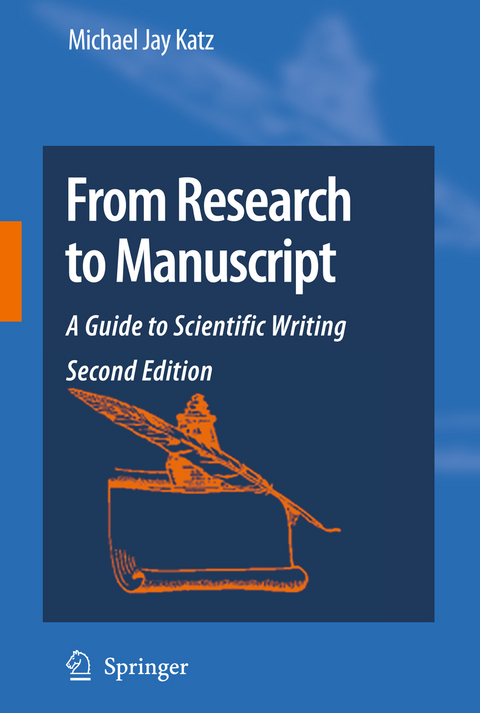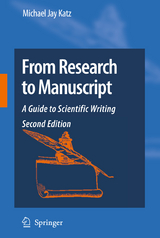From Research to Manuscript
Springer-Verlag New York Inc.
978-1-4020-9466-8 (ISBN)
Acknowledgements. Introduction. Scientific Papers Used as Examples; Part I: Tools and Techniques. 1 The Standards of a Scientific Paper. A- A Stereotyped Format. B- Precise Language. C- A Single, Clear Direction. D- Reviewed and Made Available to Others. 2 Scientific Words, Sentences, and Paragraphs. A-Scientific Text Needs Exactness and Clarity. B- The Paragraph is the Unit of Exposition. 3 Writing Scientific Text. A- Begin to Write While You Experiment. B- Start Broadly, Work on the Details Later. C- A Magnified View of the Writing Process. D- Advice to Speakers of Other Languages. 4 Presenting Numerical Data. A- Tables. B- Statistics. 5 Constructing Scientific Figures. A- Basic Guidelines. B- Figure Legends. C- Numerical Figures. D- Preparation for Submission to a Journal. E- Scientific Patterns should be Reproducible; Part II: Writing a Research Paper. 1 Writing During Research. A. Keep a Computerized Notebook B. Begin a Draft Early Chapter 2 Composing the Sections of a Research Paper; A. Materials and Methods; B. Appendix; C. Results; D. Discussion; E. Conclusion; F. Limitations of this Study; G. Introduction; H. Abstract; I. Key Words and List of Nonstandard Abbreviations; J. Title; K. Footnotes; L. Acknowledgements; M. References; Part III: Preparing a Manuscript for Submission; Chapter 1. Choosing a Journal, A. Make a List of Candidate Journals, B. Style Rules; Chapter 2 A Final Rewrite, A. Get a Friendly Critique , B. Read the Paper Backwards, C. Recheck the Spelling; Chapter 3 Preparing and Submitting the Manuscript, A. Print and Page Format, B. The Manuscript Packet, C. The Introductory Letter; Chapter 4 Responding to Editors and Referees; Appendix A Words That Are Often Misused; Appendix B Simplifying Wordy, Redundant, And Awkward Phrases; Appendix C Standard Scientific Abbreviations, Appendix D Typical Bibliographic Formats, Appendix E Additional Reading, Appendix F Software Suggestions; Index.
| Zusatzinfo | XIV, 210 p. |
|---|---|
| Verlagsort | New York, NY |
| Sprache | englisch |
| Maße | 155 x 235 mm |
| Themenwelt | Schulbuch / Wörterbuch |
| Medizin / Pharmazie ► Studium | |
| Naturwissenschaften ► Biologie | |
| Sozialwissenschaften | |
| Technik | |
| ISBN-10 | 1-4020-9466-3 / 1402094663 |
| ISBN-13 | 978-1-4020-9466-8 / 9781402094668 |
| Zustand | Neuware |
| Haben Sie eine Frage zum Produkt? |
aus dem Bereich




